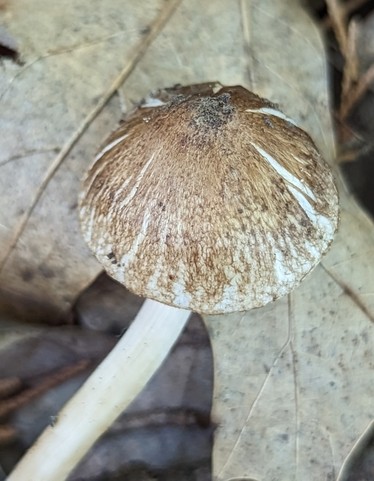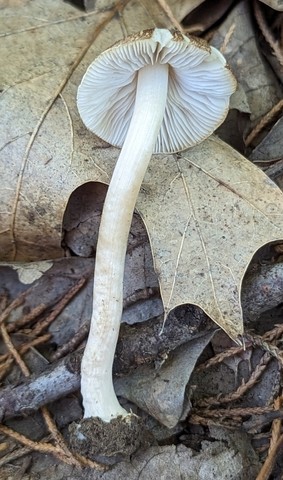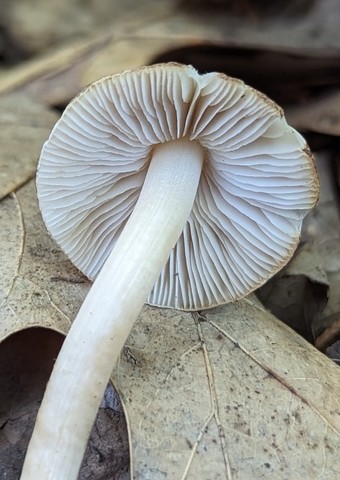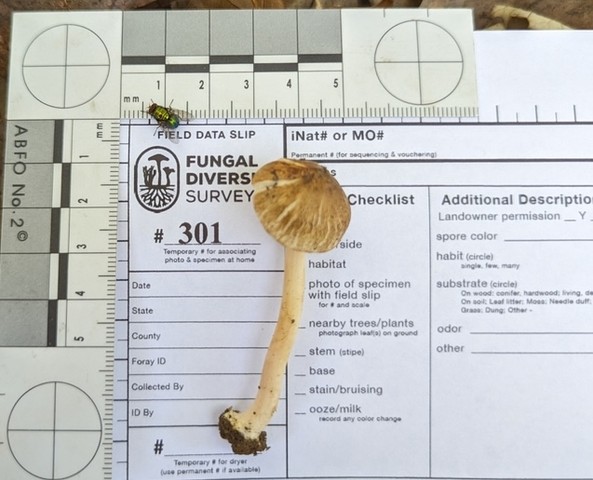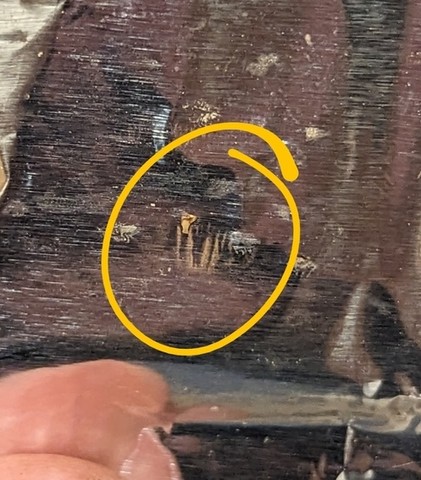Inocybe sp-IN02
Life > Fungi > Basidiomycota > Agaricomycotina > Agaricomycetes > Agaricomycetidae > Agaricales > Agaricineae > Inocybaceae > Inocybe
Description
2024 DNA results of Inocybe sp-IN02 represent it as an undescribed species originally sequenced in Indiana. It is currently using the cryptic name "sp-IN02" until it can be formally described.
Members of these genus are known to be toxic. The toxin in question called muscarine. Please review the list of symptoms below.
The symptoms usually occur within 15-30 minutes of ingestion, and are focused on the involuntary nervous system. They include excessive salivation, sweating, tears, lactation (in pregnant women), plus severe vomiting and diarrhea. These symptoms may be accompanied by visual disturbances, irregular pulse, decreased blood pressure, and difficulty breathing. Victims normally recover within 24 hours, but severe cases may result in death due to respiratory failure. Atropine is a specific antidote, but must be administered by a physician. Dogs are particularly susceptible to the toxin muscarine. (Beug, 2024)
If you or someone you know has been poisoned by consuming wild mushrooms, call 9-1-1 and get the individual medical attention IMMEDIATELY. Afterwards, please report poisonings to the North American Mycological Association to contribute to our understanding of wild mushroom safety.
Observations
August 15th, 2023 Indian Cave State Park
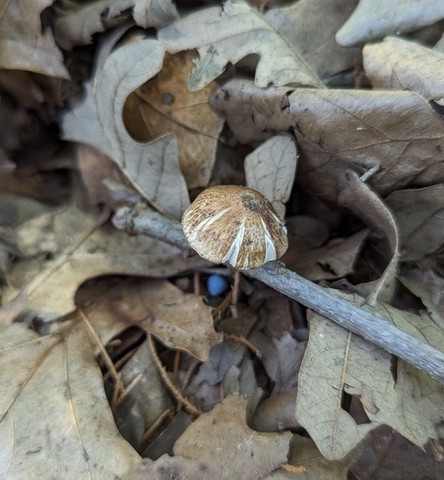
#301
- Growing solitarily in thin mixed oak, woodland edge.
- Nearby Trees: Ash, Eastern Red Cedar, Bur Oak, Black Walnut, Northern Red Oak, and Black Oak.
- Cap conical to bell-shaped with brown fibers that split towards the margin.
- Lamellae white, not attached to stipe, with frequent partial gills.
- Stipe white, fibrulose with a slightly enlarged base.
Additional Info
- Smell: spermatic
- Taste: not distinctive
- Spore Print: light brown.
GTCGTAACAAGGTTTCCGTAGGTGAACCTGCGGAAGGATCATTATCGAATGAATTTGAACAGGCTGTTTGCTGGCTTCTTTCCAGAGGCATATTGTGCACGCTTGTCATCTCTCATGTTTTCCAACTGTGCACACATTGTAGATCTGGGTGGTGATTTAGTTTATTGAAAATAGATTGAGGATTTGCCATGGGTCTGGCTTTCCTTGTTGCCCCAGGTCTATGTTTATATTTTTTTTTCACAATCTCTGAAATGGTATTAGAATGTTGGGCAACAATTGAAGTTTTATACAACTTTCAGCAACGGATCTCTTGGCTCTCGCATCGATGAAGAACGCAGCGAAATGCGATAAGTAATGTGAATTGCAGAATTCAGTGAATCATCGAATCTTTGAACGCATCTTGCGCTCCTTGGTATTCCGAGGAGCATGCCTGTTTGAGTGTCATCAAGTTCTCAACTGCATCCATTGAATTCGGGTGTGGATTTGGATCATGGAGTTTGCAGGCTCTTTAGGTCTGCTTCTCTGAAATGTATTAGTGGCAATGTGGAAAAGCTACTGCGGGTGTGATAACTATATCTATGCCTATGCAGTGTTCTGCTGTGCCGCCTTTTGCAGGAATTAAATTTTTTTTGACAAACTTGACCTCAAATCAGGTAGGACTACCCGCTGAACTTView MycoMap DNA Results
References
Beug, M. (2024, April 23). Mushroom Poisoning Syndromes - North American Mycological Association. North American Mycological Association. https://namyco.org/interests/toxicology/mushroom-poisoning-syndromes/#muscarine
Created December 15, 2025 at 10:41 AM
